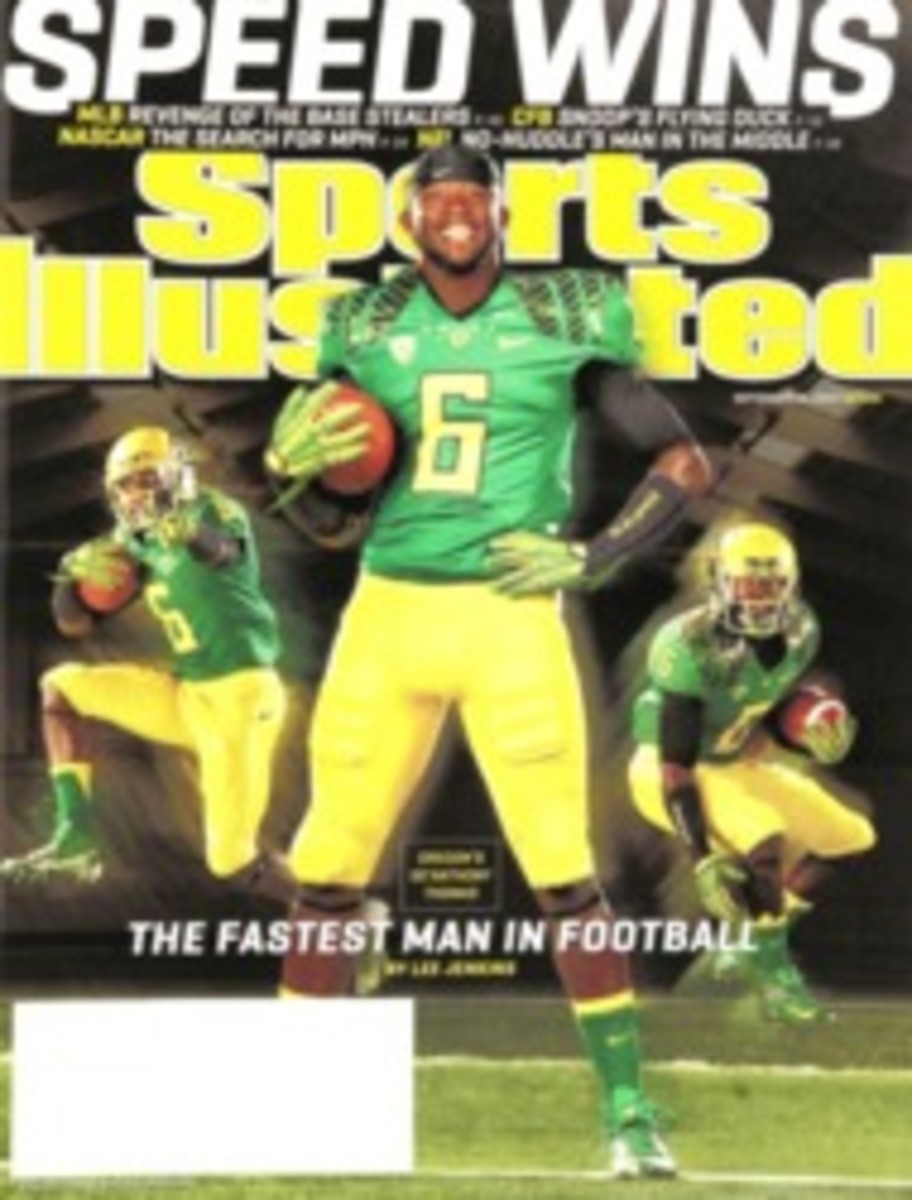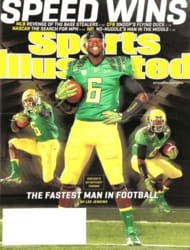
Striking a Blow for Slow
Speed it up. Make it snappy. Everything in our games today has to be quickquickquick. Football? Go to the no-huddle offense. Basketball? Shoot it in seven seconds or less. Baseball? Stay in the batter's box, hitter. Stop throwing over to first, pitcher. You're slowing down the game. If it's slow, it has to go.
Our games are stuck on fast-forward, and almost anything that moves at a more deliberate pace is old-fashioned, an annoyance, like a car going 55 in the fast lane. Teams want pitchers with fastballs that melt radar guns. They want linebackers who can outrun running backs. Athletes are only as good as the stopwatch says they are. But into that high-speed headwind floats one of the few things in sports that has remained appealingly, charmingly, effectively slow—the knuckleball.
The knuckler is in the midst of a renaissance of sorts—a gentle, understated one, in keeping with a pitch that its foremost current practitioner, R.A. Dickey of the Mets, likens to letting a butterfly loose. Dickey, 18--5 with a 2.68 ERA through Sunday, has helped make the knuckleball relevant again. He's on the short list of candidates for the National League Cy Young Award, and he's the author of a well-received autobiography released in March. He's also one of the central figures in Knuckleball!, the documentary released this week in theaters and online that explores the mysteries of the pitch through interviews with knuckleballers past and present such as Charlie Hough, Phil Niekro and Tim Wakefield.
The success of pitchers like Wakefield, who retired after last season, and Dickey hasn't exactly inspired a legion of pitchers to begin filing their nails and using the pitch, a marvel of physics that is thrown with almost no rotation, causing it to dance unpredictably as the air flows unevenly over the seams and pushes it in random directions. But there has been a bit of a trickle-down effect. The Red Sox hope they have an heir to Wakefield in Steven Wright, 28, a career minor leaguer who has been more effective since adopting the knuckleball two years ago. Dickey has been a guru to Stephen Orso, a Maryland freshman who was a mediocre high school pitcher before he began throwing the knuckler as a sophomore and improved enough for the Terrapins to invite him to school as a walk-on. He had to bring an oversized glove from home for the Terps catchers. Even so, he says, "they've still had a hard time holding on to some of my knuckleballs. In terms of my making the team, I'm not sure if that's a good sign or a bad one."
The pitch has even crossed geographical and gender lines. In Japan, Eri Yoshida was a teenager when she saw Wakefield pitch on television. She started throwing the knuckler with a sidearm motion, getting male hitters out with enough regularity to become, at age 16, the first female ever drafted by a Japanese professional team. That in turn led to Yoshida, now 20, pitching in the U.S., in the North American Baseball League, where she was 4--6 with a 5.56 ERA in the 2012 season.
That the knuckleball survives even in a souped-up sports world is something for which we should be grateful. We need the knuckler to help counteract the obsession with speed. The pitch is proof that there is still a place in the game for nuance, for the measured, deliberate execution of a skill. Even speed freaks should be able to appreciate the way a knuckler half-floats, half-dances toward the plate, flummoxing hitters who have no trouble getting around on 95-mph heaters. Take the foot off the gas for a second, relax and watch the knuckleball strike a blow for slow. "All the managers and G.M.'s say they want guys who know how to pitch," Niekro says. "They say location and movement are more important than velocity. Then they go out and draft half a dozen more guys who throw 98. I love what guys like R.A. and Tim have done, proving that velocity is not the answer to everything."
Wakefield may provide better evidence of that than Dickey, who throws a relatively hard knuckler that sometimes reaches 80 mph. But that's not exactly throwing gas—it's about the speed of the average big league changeup. Wakefield and knuckleballers of past generations, such as Niekro, Hoyt Wilhelm and Wilbur Wood, threw in the 60-to-70-mph area. But regardless of its speed, the knuckleball is a test of patience and touch, not to mention courage. "You need the fingertips of a safecracker and the mind of a Zen Buddhist," as Jim Bouton says in Knuckleball!, "because you throw the ball off your fingertips, but if one of those fingers happens to catch on the ball or stay on it a little bit longer, it tumbles. And once the ball tumbles it's like batting practice: Here, hit it."
Throwing a knuckleball is, then, like skydiving—it can be beautiful when the parachute opens but fatal when it doesn't. We ought to give a standing ovation to the pitchers with the guts to jump out of the plane on a regular basis, but don't feel as if you have to drop everything and cheer. Knuckleballers understand that there's nothing wrong, every now and then, with taking your time.
Follow @SI_PhilTaylor
WE NEED THE KNUCKLEBALL TO HELP COUNTERACT THE OBSESSION WITH SPEED, TO PROVE THAT THERE IS STILL A PLACE FOR NUANCE AND SKILL.
PHOTO
JOHN BURGESS

